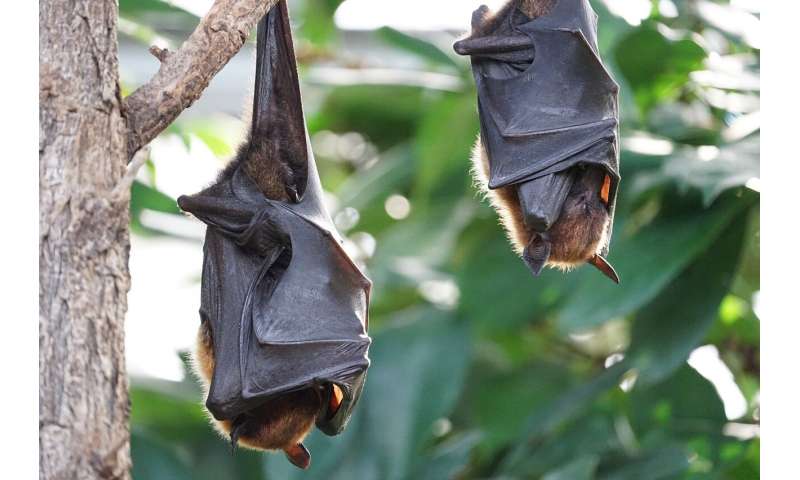NOVEMBER 5, 2019
by Patrick M. O'connell
 Credit: CC0 Public Domain
Credit: CC0 Public Domain
It's the time of year when ghouls and goblins, mummies and monsters are out in force. But unlike many Halloween creatures, bats live in more than the imagination, making their homes in caves and hollowed-out trees in Illinois and the urban parks of Chicago.
The elusive winged mammals who make special appearances in decorations and throughout popular culture during the fall are under increasing threats across the state and the Midwest, the victim of a stubborn and spreading disease, shrinking natural habitat and a growing wind turbine industry. And with new changes to the Endangered Species Act, scientists and environmental advocates fear additional species of bats may be under siege from encroaching development and a changing, warming climate.
"It's really important to protect those remaining in the landscape so the bats do have a chance to reproduce," said Winifred Frick, the chief scientist at Bat Conservation International, adding that she believes it will be harder to prove that certain habitats are critical for the survival of a species in order for them to qualify for protected status in the future. "Anything that would hinder our ability to protect their habitat or their maternity habitats is less than ideal."
Mostly out of sight and out of mind because of their nighttime lifestyle and solitary flight tendencies, a dozen species of bats regularly call Illinois home, at least during the summer months, and the animals can be found throughout the Midwest. Aside from their rare nuisance appearances in attics, bats play a positive, critical role in the ecosystem, scientists say.
The animals can be found in a variety of places across the city and the suburbs, scientists said, including city parks, forest preserves, golf courses and under roof tiles. Bats benefit humans during the summer by eating pesky insects, including mosquitoes, and provide important protection for Midwestern crops like corn and soybeans by feasting on bugs that could otherwise ravage farmland. In addition to pest control, bats—there are more than 40 different species that live in the U.S. - help pollinate plants and disperse seeds. And contrary to popular myth, less than half of 1% of bats carry rabies, according to the U.S. Fish and Wildlife Service.













No comments:
Post a Comment
You only need to enter your comment once! Comments will appear once they have been moderated. This is so as to stop the would-be comedian who has been spamming the comments here with inane and often offensive remarks. You know who you are!